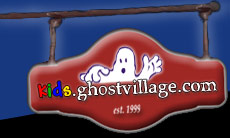Ghost Hunting With Your Kids

You're a parent, a paranormal investigator, and your kids are curious about what you do and what you believe. Or maybe your kids have been influenced by the myriad of ghost hunting television shows and would like to do some supernatural sleuthing of their own. Either way, a family outing to investigate a haunt can be an educational, fun, and bonding experience. Plus, conducting a study of a haunt can be very empowering for children… after all, you can't be afraid of something you're looking for. But that doesn't mean you should jump in willy-nilly.
If you're new at delving into haunted places, we recommend you start with public, historic haunts such as battlefields, restaurants or inns with a haunted reputation, parks, and places like those where you have permission to enter and space to walk around.
How old should my child be before I take her on an investigation?
This is a personal choice, but do keep in mind that a real ghost investigation is about searching through history, speaking with witnesses, and requires a certain level of maturity and attention span. Here's a gauge: if your child is old enough to go to a museum, pay attention to the exhibits, and not get bored, then he can likely handle a ghost investigation.
How do I get started?
We suggest you read our section for Junior Ghost Hunters for guidelines on conducting an investigation. We also recommend the book
Picture Yourself Ghost Hunting by Christopher Balzano.
Empower your kids.
Let your children take the lead as much as possible. Allow them to research the history of the location and present it to your team/family. Do allow your kids to take pictures and ask questions of people who live and work in the location. Let them run the show, and be there to assist.
How do I keep my children safe during an investigation?
If you've read the Junior Ghost Hunting guidelines, you already know to never go into a location where you don't have permission to be there. If you're going at night, do bring flashlights and comfortable clothes. Do be aware of your surroundings and avoid any dangers that would pose a threat in any other situation. For example: Are you in a safe neighborhood? Are there any swamps, animals, or other natural dangers in the area that you need to avoid? Did you wear the right clothes and footwear for your terrain? In the end, use common sense first.
The next issue to address is on the supernatural side. If something does happen, or if the situation becomes tense, you'll need to keep a close eye on your children. If you ever have any doubt for your safety or the safety of your children, get out of the situation immediately. However, if you're comfortable, and your child is only uneasy, reassure, and press ahead. This is an opportunity to build your child's confidence. But, if that uneasy feeling turns to panic, don't press the issue, because nothing good will come of it. Remove your child from the situation and take him to a place where he feels safe.
Debriefing
Debriefing after an investigation is important because it offers an opportunity to see if any history lessons were learned, it allows kids the chance to ask questions about what they saw or experienced and how it fits into their understanding of the world around them, and it provides closure to the investigation. Remember, only answer the questions your children ask. Be succinct.
When you've completed your investigation, we encourage your Junior Ghost Hunter to write up a report based on our
forms and tips section, and send it in for publication on
Kids.Ghostvillage.com. Happy hauntings!
